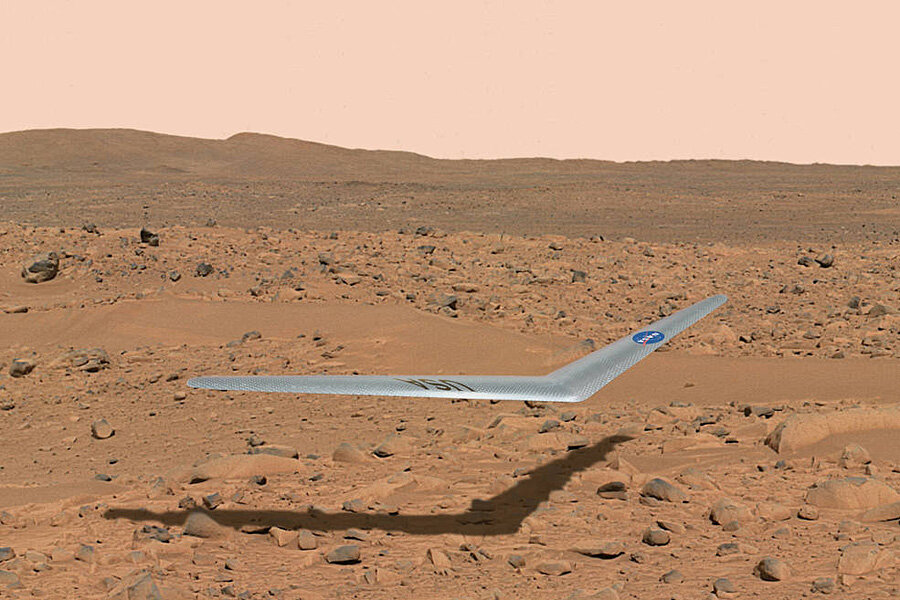Why is NASA sending a boomerang to Mars?
Loading...
NASA’s Armstrong Flight Research Center announced on Tuesday that it has plans to drop its Preliminary Research Aerodynamic Design to Land on Mars (Prandtl-m), a glider-like structure, from a high altitude balloon at the height of 100,000 feet this year.
"The aircraft would be part of the ballast that would be ejected from the aeroshell that takes the Mars rover to the planet," said Al Bowers, NASA Armstrong chief scientist and Prandtl-m program manager, in the NASA press release.
The spacecraft has a wingspan of two feet and would weigh less than a pound on Mars due to the lower gravitational pull on the red planet (on Earth it weighs 2.6 pounds). The glider will be created from either fiberglass or carbon fiber and would be able to fly for around 10 minutes.
The research group will attach either a mapping camera or a small, high-altitude radiometer to measure radiation at very high altitudes of Earth's atmosphere on the first balloon drop test. In the future, the team hopes to be able to attach both. Cameras could scan and take high-resolution photos of the surface they are covering, which would give more information to future manned-missions to Mars, including the potential Mars One mission.
The glider could travel, folded up, in a CubeSat – a small, box-like “nanosatellite” which has a volume of a quart and weigh close to three pounds. There is a mission going to Mars sometime between 2022 and 2024, and the glider would go along for the ride.
“The balloon would drop the CubeSat container and then the aircraft would deploy from the container right after the drop, unfold and fly away," said Mr. Bowers in the NASA press release.
Three tests are scheduled for the Prandtl-m glider, including two balloon-drop tests on Earth and a possible sounding rocket flight to demonstrate how the glider would work on Mars. Sounding rocket flights enable scientists to test how objects on flights would react to a variety of space-like circumstances, as the rocket carries payloads 30 to 800 miles off the ground. The payload tests are simple, cost-effective, and efficient. One of the largest advantages from a monetary standpoint is that pieces of the rocket tested are retrievable.
The sounding rocket test would carry the rocket with the CubeSat attached and the glider inside, just as in the real launch. The rocket would launch to a height of 450,000 feet and then release the CubeSat. The glider would deploy at the 110,000-to-115,000-feet altitude range, just as though the mission were on Mars. Bowers credits the Prandtl-m concept to Dave Berger, a NASA Armstrong aeronautical engineer with the Education Office.
In 2014, the Armstrong Research Center at NASA worked on a Towed Glider Air-Launch System (TGALS), with the goal of creating a relatively inexpensive remotely or optionally piloted glider that could be towed by a large transport aircraft into space, and would be released at around 40,000 feet. The glider would hold a booster rocket that would help it enter into low Earth orbit. However, the current glider design is the first to be created for Mars.
"If the Prandtl-m completes a 450,000-foot drop, then I think the project stands a very good chance of being able to go to NASA Headquarters and say we would like permission to ride to Mars with one of the rovers." said Bowers.








